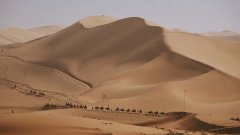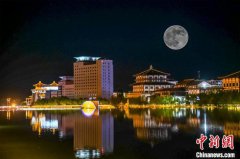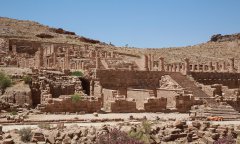Home>>
Splendid Dunhuang: Millennial cultural embassyBy Wu Chaolan, Gao Ge (People's Daily Online) 08:15, November 02, 2021
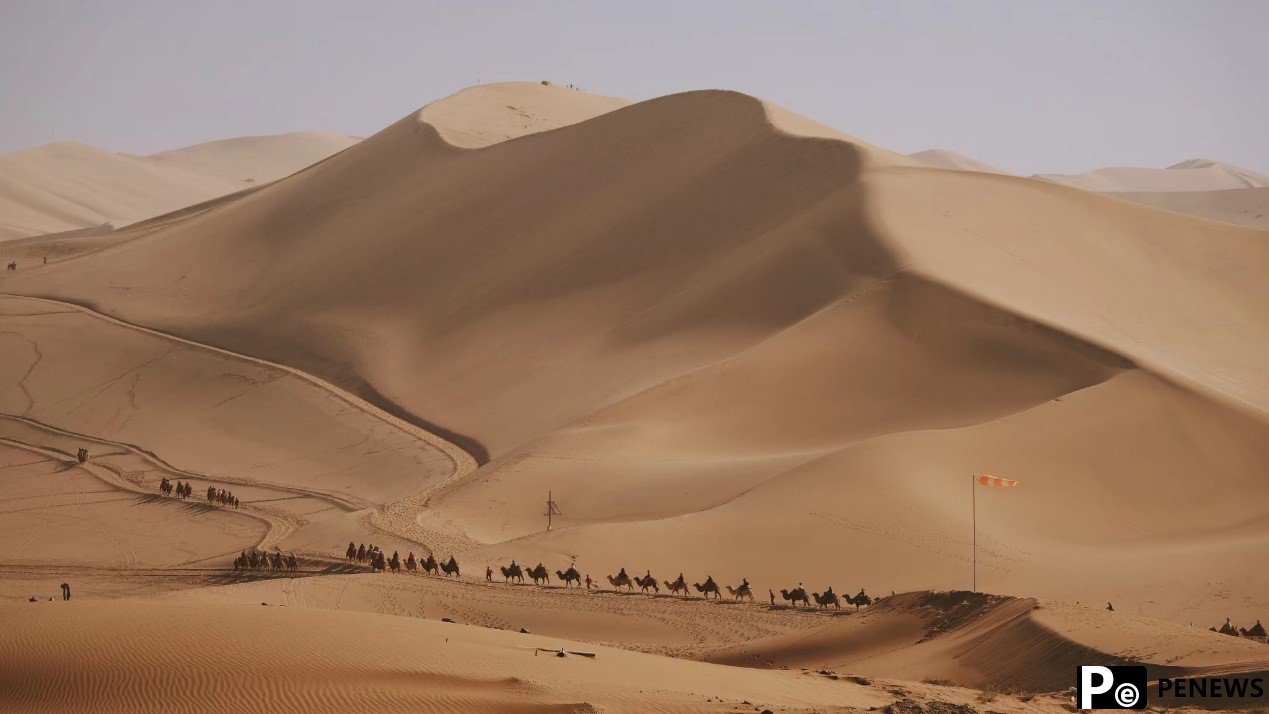
Photo taken on Oct. 16, 2021, shows the desert scenery of Mingsha Mountain and the Crescent Spring scenic area in Dunhuang, northwest China’s Gansu Province. (People's Daily Online/Lv Qiang)
"I am very anxious to see you, but I have no luck" - a Sogdian woman named Miwnay who followed her husband to do business in Dunhuang, northwest China's Gansu Province, lamented in a letter to her far-away mother, in which she indulged in bouts of nostalgia and pined for home. Sadly, her mother never had a chance to read of her grief, as the letter was engulfed by a sandstorm and buried under layers of thick sand. Thousands of years later, the letter was found by archaeologist Aurel Stein, shining a light on the bustling trade and cultural exchanges between East and West along the ancient Silk Road.
Lying at the edge of the Taklamakan Desert, Dunhuang is located at a cultural and religious crossroads on the ancient Silk Road. Over 700 years ago, when Italian adventurer Marco Polo first arrived at Dunhuang, which was crowded with people of different nationalities, he was left spellbound by the thriving fusion of international trade and culture. As the first trading cities encountered by foreign merchants, Dunhuang turned into a fantastic marketplace and led to a cultural big bang that created an unprecedented connection between East and West. The ancient Silk Road has been swallowed up by time, but Duhuang remains a vibrant hub of exchanges as the Belt and Road Initiative has reinvigorated the city, injecting a new energy into this ancient oasis.
"Dunhuang is a city with a long history, forming a distinctive Dunhuang culture, with openness and inclusiveness as core values. This is the reason why Dunhuang is still shining its ancient light on the modern era," said Shi Mingxiu, the curator of Dunhuang Museum.
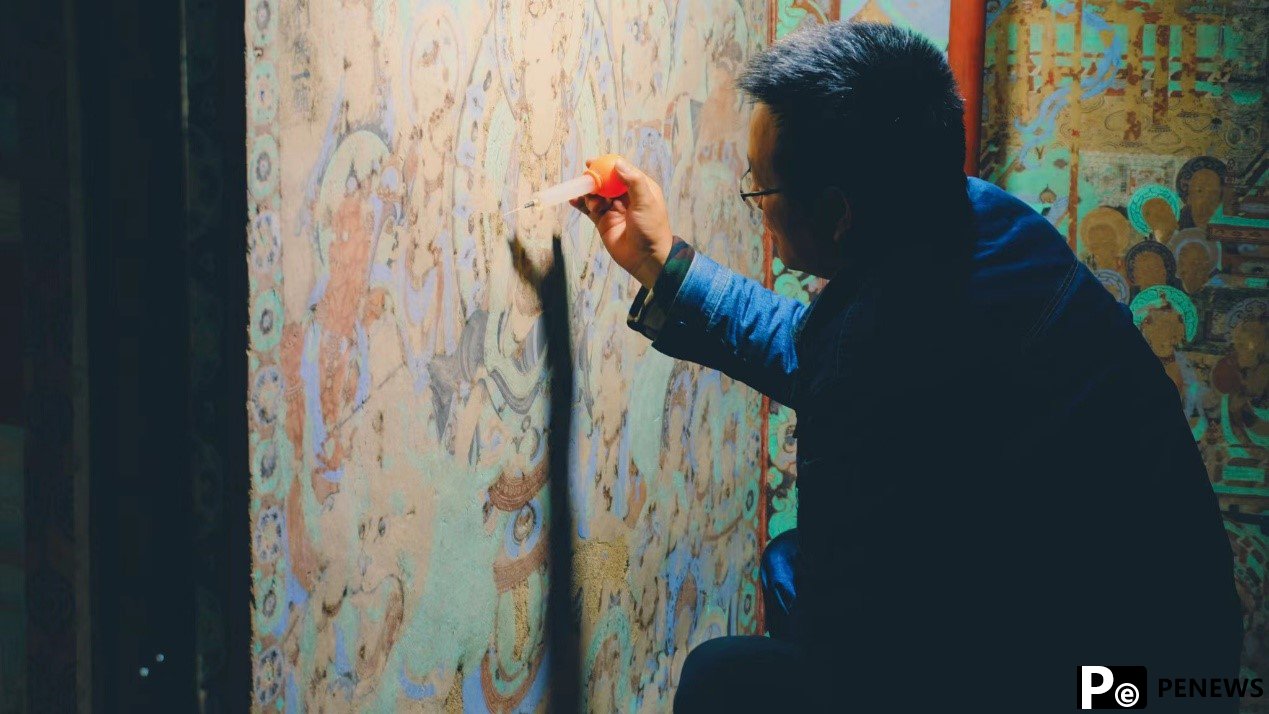
Photo taken on Oct.15, 2021 shows a cultural relic conservation expert from the Dunhuang Academy restoring a mural at Mogao Grottoes in Dunhuang, northwest China’s Gansu Province. (People's Daily Online/Lv Qiang)
Global, multicultural past
Some twenty-five kilometers southeast of Dunhuang, hundreds of caves are hewn into a cliff lavishly decorated with wall paintings and sculptural works. Buddhist gods in their sequestered shrines have witnessed the flourishing international exchanges between the diverse peoples who traversed the great trade routes of antiquity, stretching from China to the Mediterranean Sea.
"The history of this ancient Silk Road city is reflected in the Mogao Grottoes, the depositary of a multicultural past that adds fluidity and color to Chinese civilization," said Shi.
The Mogao Grottoes, also known as the Qianfodong (Caves of the Thousand Buddhas), boast a rich trove of Buddhist artworks, including more than 2,000 sculptures and 45,000 square meters of murals that span a thousand years and contain a wide range of iconography such as Chinese deities and Hindu gods.
These Buddhist artworks show a striking cultural diversity in the caves. The murals in the 492 Caves at Mogao depict how Buddhism spread into and became indigenized in China. One example is the Bodhisattva known as Avalokitesvara, which was transformed into the figure of Guanyin in China. The Nine-Colored Deer Jataka in Cave 257 is a Chinese interpretation of the Ruru Jataka, which originated in India, and tells of the Bodhisattva's birth as a deer. The characters in the murals with their different clothing styles also reflect the busy cultural exchanges that took place in Dunhuang.
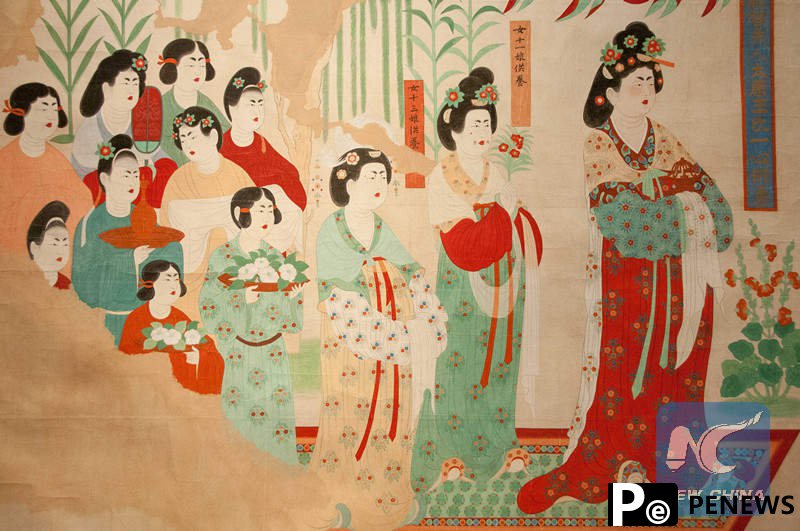
(Photo/Xinhua)
"The strong inclusiveness of Chinese culture allowed people in Dunhuang to enjoy, respect, and absorb the porous cultures from Central and Western Asia, as well as Europe, which resulted in the brilliant cultural fusion in Dunhuang," said Shi. "This mirrors a confident China that embraced foreign influences with a sense of tolerance and openness."
People from inside and outside China can find traces of their aboriginal culture in this grand cultural cache. The world-famous Cave 17, also known as the Library Cave, is home to more than 50,000 cultural relics including scrolls and manuscripts that shed light on the global civilization of the time. Sealed away for more than a millennium before their rediscovery in 1900, these precious manuscripts contain books of Psalms in Syriac, the only surviving copies of essential Mantras, rare manuscripts with Hebrew prayer, and a book of omens written in Old Turkic, providing valuable materials for other cultures to study their past.
